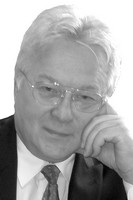Deaf and hearing-impaired young people's everyday physical activity profiling by IPAQ
Фотографии:
ˑ:
Teoriya i praktika fizicheskoy kultury №2 2017, pp.39-42
UDC 796.035
Dr.Biol., Professor S.I. Loginov1
Associate professor, PhD M.N. Malkov1
1Surgut State University, Surgut
The study was designed to profile the seasonal everyday physical activity (PA) of the young people diagnosed with different hearing impairments. IPAQ was used to survey 40 people of 25.9±2.97 years of age with different degrees of the auditory function deficits. One study group was composed of hearing-impaired men (HIM, n=11) and women (HIW, n=9), and the other group of deaf men (DM, n=11) and women (DW, n=9) with the relevant diagnoses. The subjects were requested to fill-in the Russian version of IPAQ in autumn 2015 and spring 2016. The study found the deaf and hearing-impaired subjects being more active (less sitting) in the spring time versus the autumn time (F(1.78)=3.6864, p=0.052). The physical activity energy costs for the deaf subjects were found lower in spring versus autumn: 2641 (2564; 4717) versus 2449 (2082; 3268) МЕТ/min per week for the physical activity in metabolic equivalent (p<0.05). The share of low-active deaf subjects sitting for 6-9 hours per day was found to grow in the spring time from 10% to 15% whilst the hearing-impaired people were found to be modestly active for the whole year. However, the study found among the latter a subgroup of low-active individual sitting for 6-9 hours per day and, therefore, being in need of the sitting behaviour correction initiatives like the ones applied to deaf people.
Keywords: physical activity, motor activity, hearing impairment, IPAQ form, 20-30 years-old adults.
References
- Boytsov S.A., Potemkina R.A. Profilaktika neinfektsionnykh zabolevaniy i formirovanie zdorovogo obraza zhizni: regionalnye mezhvedomstvennye tselevye programmy kak klyuchevoe reshenie [Prevention of non-communicable diseases and promoting healthy lifestyle: regional interdepartmental target programs as a key solution]. Natsionalnye proekty, 2013, no. 1, pp. 31-35.
- Vsemirnaya organizatsiya zdravookhraneniya: Globalny plan deystviy po profilaktike neinfektsionnykh zabolevaniy i borbe s nimi na 2013-2020 gg. [World Health Organization: Global Action Plan for NCD prevention and control in the 2013-2020 bilennium]. Available at: https://who.int/ncd.
- Loginov S.I., Nikolaev A.Yu., Vetoshnikov A.Yu., Sagadeeva S.G. Fizicheskaya aktivnost zhiteley goroda Surguta po dannym mezhdunarodnogo oprosnika IPAQ [Evaluation of Physical Activity of Surgut Residents According to International Questionnaire IPAQ]. Teoriya i praktika fiz. kultury, 2015, no. 1, pp. 83–85.
- Loginov S.I., Devitsyn I.N., Nikolaev A.Yu. Rashchet i otsenka urovnya i struktury fizicheskoy aktivnosti po dannym mezhdunarodnogo oprosnika IPAQ [Calculation and evaluation of the level and structure of physical activity according to international questionnaire IPAQ]. Certificate of state registration of the computer program no. 2015660418. ROSPATENT. Moscow, 2015.
- Potemkina R.A. Vrachebnoe konsultirovanie po voprosam fizicheskoy aktivnosti (rekomendatsii dlya vrachey pervichnogo zdravookhraneniya) [Physician counseling on physical activity (recommendations for primary health care physicians)]. Profilakticheskaya meditsina, 2010. no. 3, pp. 24-34.
- International Physical Activity Questionnaire. Available at: https://sites.google.com/site/theipaq/
- Menezes D., Laranjo L., Marmeleira J. Criterion-related validity of the short form of the international physical activity questionnaire in adults who are Deaf. Disabil. Health J. 2016 Jun 21. Pii: S1936-6574(16)30093-0. Doi: 10.1016/j.dhjo.2016.06.005.



 Журнал "THEORY AND PRACTICE
Журнал "THEORY AND PRACTICE